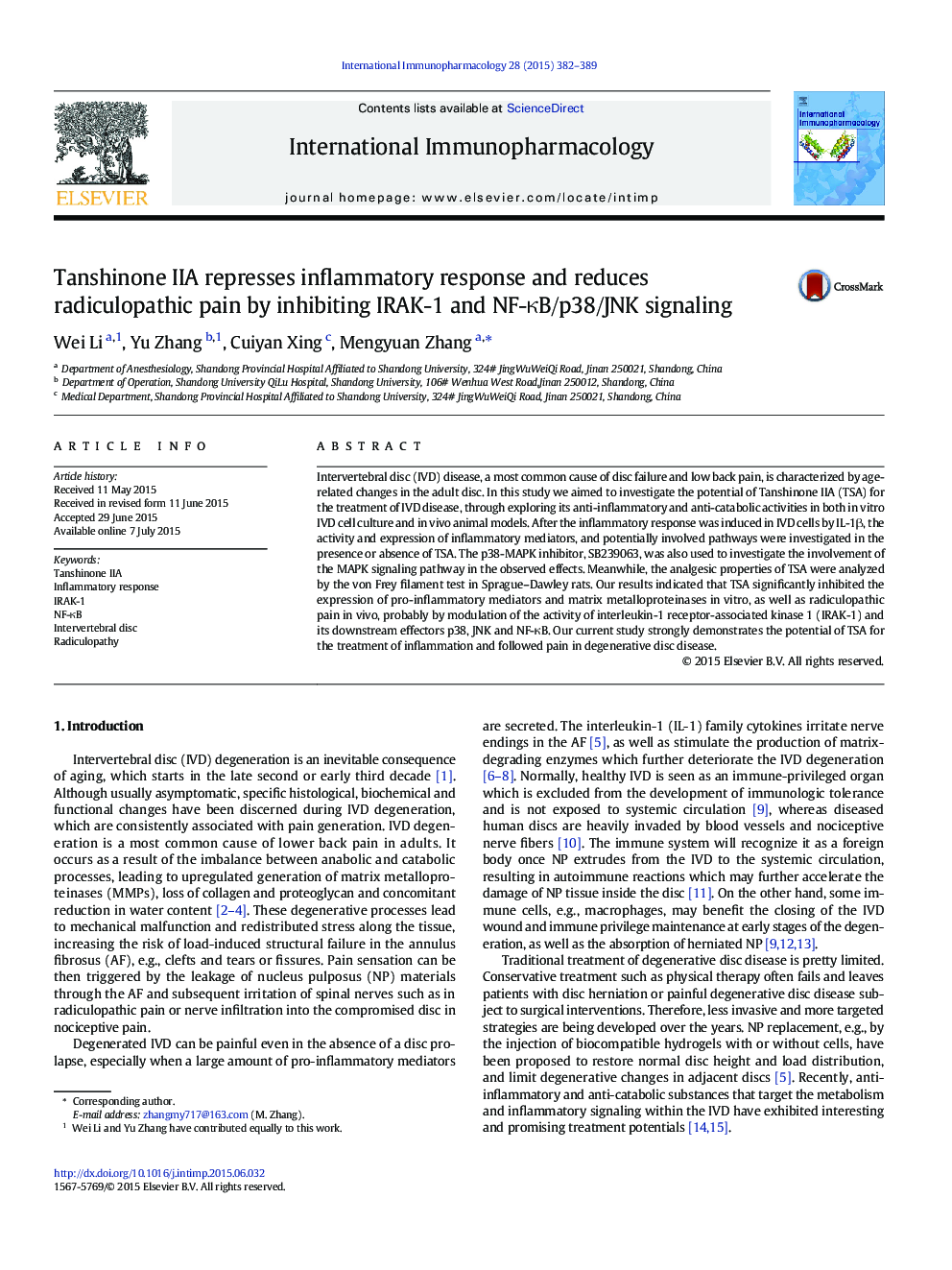| Article ID | Journal | Published Year | Pages | File Type |
|---|---|---|---|---|
| 2540469 | International Immunopharmacology | 2015 | 8 Pages |
•TSA significantly inhibited inflammation and matrix metalloproteinases in vitro.•TSA significantly inhibited radiculopathic pain in vivo.•Anti-inflammatory effect of TSA was mediated through the NF-κB/p38/JNK signaling.
Intervertebral disc (IVD) disease, a most common cause of disc failure and low back pain, is characterized by age-related changes in the adult disc. In this study we aimed to investigate the potential of Tanshinone IIA (TSA) for the treatment of IVD disease, through exploring its anti-inflammatory and anti-catabolic activities in both in vitro IVD cell culture and in vivo animal models. After the inflammatory response was induced in IVD cells by IL-1β, the activity and expression of inflammatory mediators, and potentially involved pathways were investigated in the presence or absence of TSA. The p38-MAPK inhibitor, SB239063, was also used to investigate the involvement of the MAPK signaling pathway in the observed effects. Meanwhile, the analgesic properties of TSA were analyzed by the von Frey filament test in Sprague–Dawley rats. Our results indicated that TSA significantly inhibited the expression of pro-inflammatory mediators and matrix metalloproteinases in vitro, as well as radiculopathic pain in vivo, probably by modulation of the activity of interleukin-1 receptor-associated kinase 1 (IRAK-1) and its downstream effectors p38, JNK and NF-κB. Our current study strongly demonstrates the potential of TSA for the treatment of inflammation and followed pain in degenerative disc disease.
